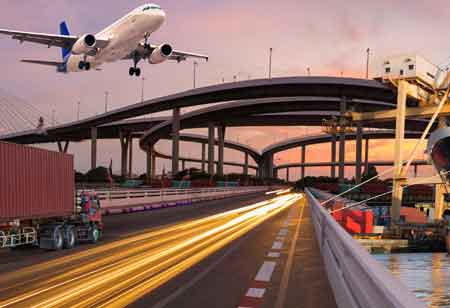THANK YOU FOR SUBSCRIBING
THANK YOU FOR SUBSCRIBING

By
Logistics Transportation Review | Friday, December 08, 2023
Stay ahead of the industry with exclusive feature stories on the top companies, expert insights and the latest news delivered straight to your inbox. Subscribe today.
Occasionally, the importance of drayage needs to be addressed. Traders can reduce ETA for deliveries by using drayage services if executed competently. Thus, drayage services helmed well can lead to satisfied customers.
FREMONT, CA: Numerous transportation service providers are involved in international trade. Such services are known as drayage and are usually employed for short distances. It consists of trucking during transshipments, trans-loading goods from rail cars onto truck beds, and moving goods from the destination port to the ultimate delivery location. Shippers could hire third-party suppliers or rely on freight forwarders for drayage services. Drayage providers are usually located near transportation hubs such as ports, railway terminals, and warehouses to speed up delivery times.
The concept of drayage is surprisingly ancient, as the term was first used in 1791. Horse-drawn carts traversed a few kilometers to transport large merchandise from warehouses to ports and vice versa. The name "dray" refers to horse-drawn carts. In the past, drayage consisted of horses transporting goods across short distances.
The longest drawback of this means of transportation was the time it took. This issue was resolved by service providers switching to trucks for drayage. Due to the increasing use of electricity in commercial activities and the advent of combustion engines in 1860, trucks became the most frequent drayage carriers in shipping by the late 1800s and early 1900s. Even today, service providers commonly use trucks to transport items from warehouses or production sites to ports and for final-mile delivery.
Freight forwarders and other service providers have recently begun using technology to enhance drayage services' transparency and sustainability. This adds to the extensive list of advantages already provided by drayage to shippers and service providers.
Drayage is a fundamental and indispensable part of maritime logistics. The significance of drayage to a firm is highly dependent on the caliber of the 3PL service provider chosen. If a shipper chooses a trustworthy service provider, the drayage procedure can be enormously advantageous in the following ways:
The absence of port congestion: Shipping ports are busy and crowded most of the day. Many shippers, freight forwarders, port employees, transporters, and other companies operate directly from ports. If a shipper entrusts its drayage to a reliable 3PL, it can avoid contributing to congestion. This also allows firms to run more smoothly and efficiently. Using a 3PL service provider for drayage is also far less expensive than maintaining a physical presence at ports.
Skill in carrying items safely: Providers of 3PL logistics specializing in drayage are seasoned professionals. They know that it is necessary to carry items properly across short distances. In addition, these handlers are well-versed in the diverse safety rules that apply to the numerous items transferred from one location to another. Typically, they would be better able to complete the task safely than the shippers.
Enhanced visibility and management of the logistical procedure: As previously stated, modern, digital 3PL service providers utilize various tracking technologies to make drayage more traceable for shippers. Tracking improves shippers' visibility and, more crucially, enables them to coordinate efficiently with their supply chain partners, giving them greater control over the process. A shipper may, for instance, instruct a related trucker transporting goods to a particular port to redirect the vehicle to a different port in real time, if necessary.
Decrease in supply chain lead time: The proficient management of drayage by seasoned 3PL service providers reduces the time required to complete this logistics process. This significantly reduces the overall cycle time of a trader's logistics and supply chain.
Concentrate on core operations: Since 3PL service providers expertly manage a trader's drayage, the trader may focus on core business operations, such as manufacturing, packaging, and marketing items, as well as handling customer complaints and inquiries.
Drayage refers to the conveyance of products across short distances and the fee associated with this service. Drayage refers to the conveyance of products for commercial purposes over short distances. This may include moving products from one warehouse to another inside the same city, carrying a container from a trader's warehouse to a port for international shipping, or moving a container from a port or border to a trader's warehouse.
I agree We use cookies on this website to enhance your user experience. By clicking any link on this page you are giving your consent for us to set cookies. More info





